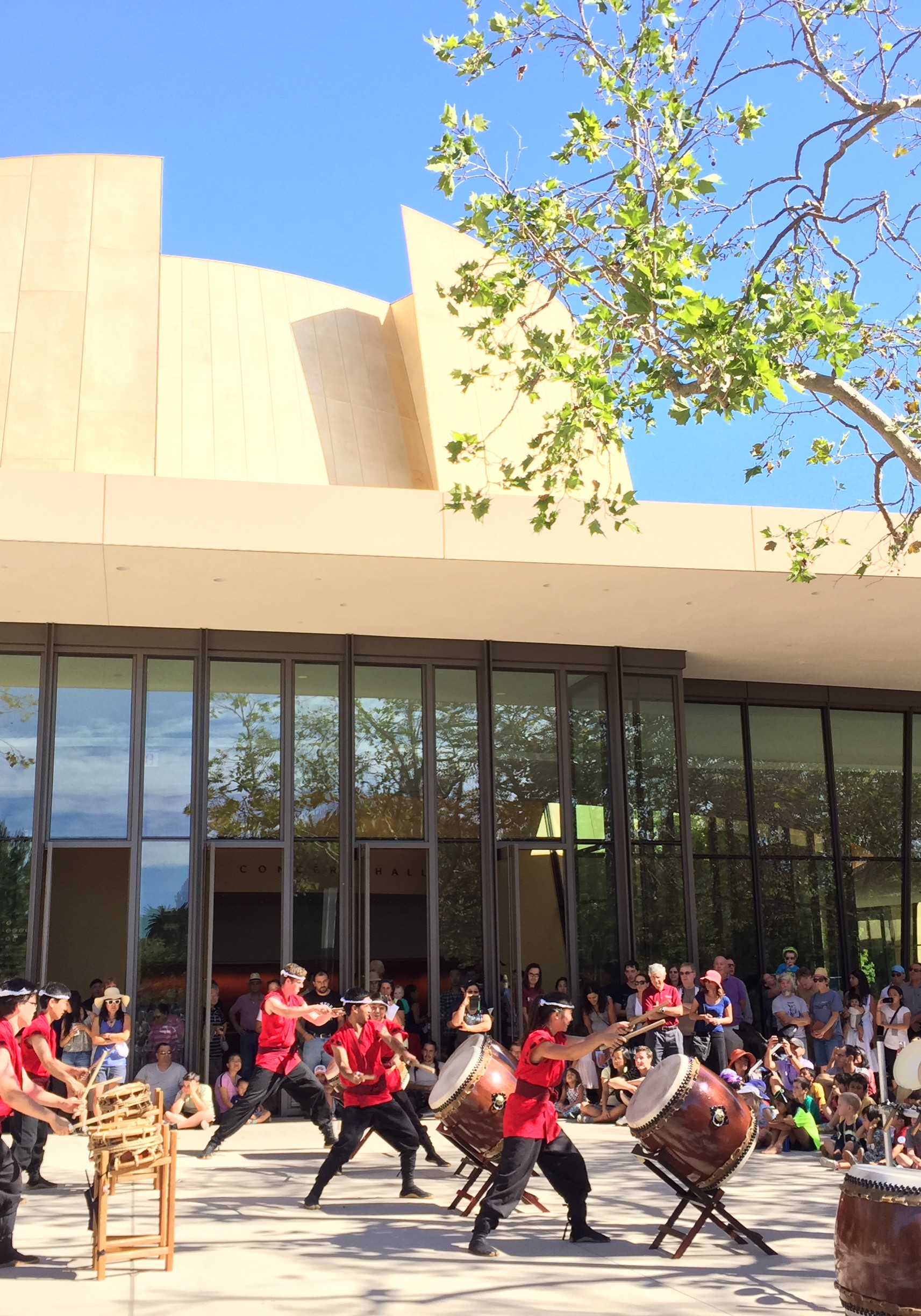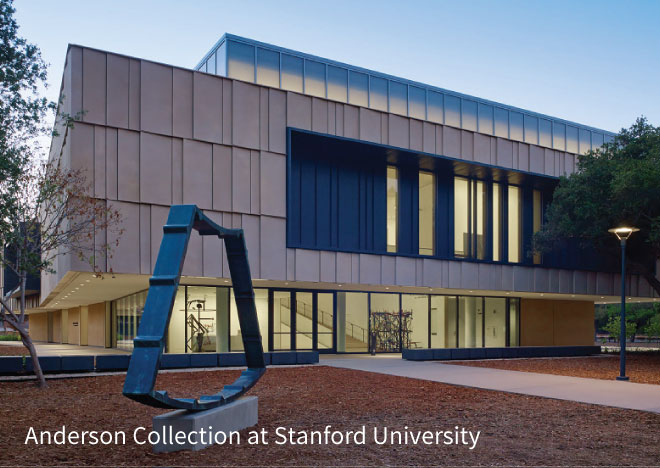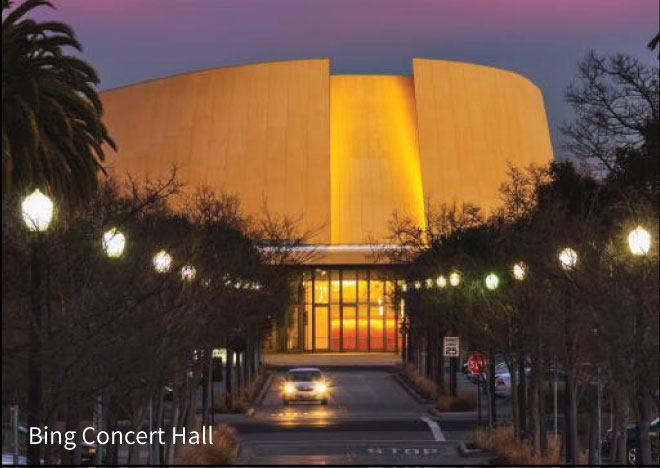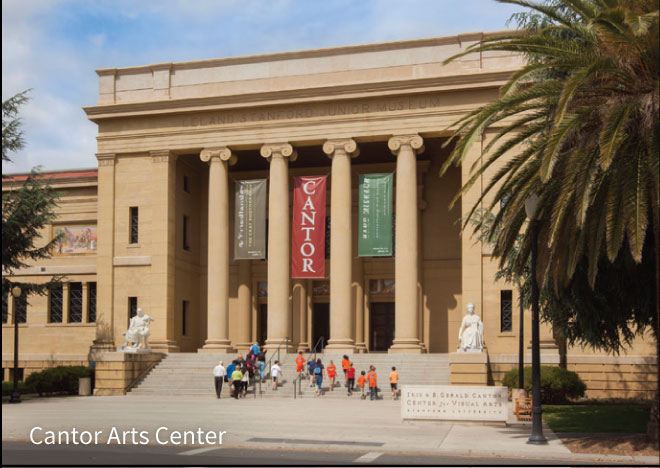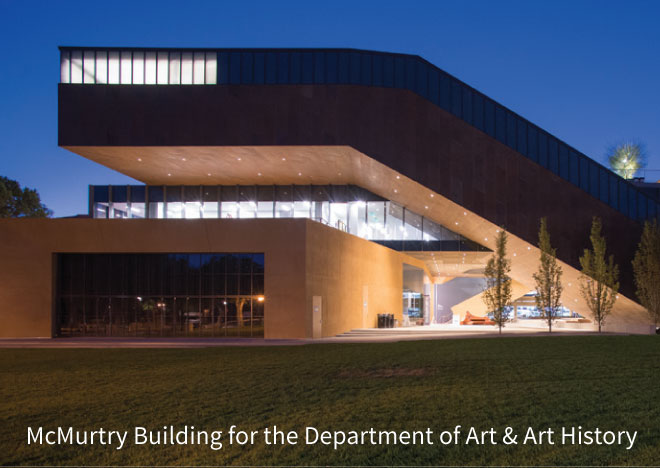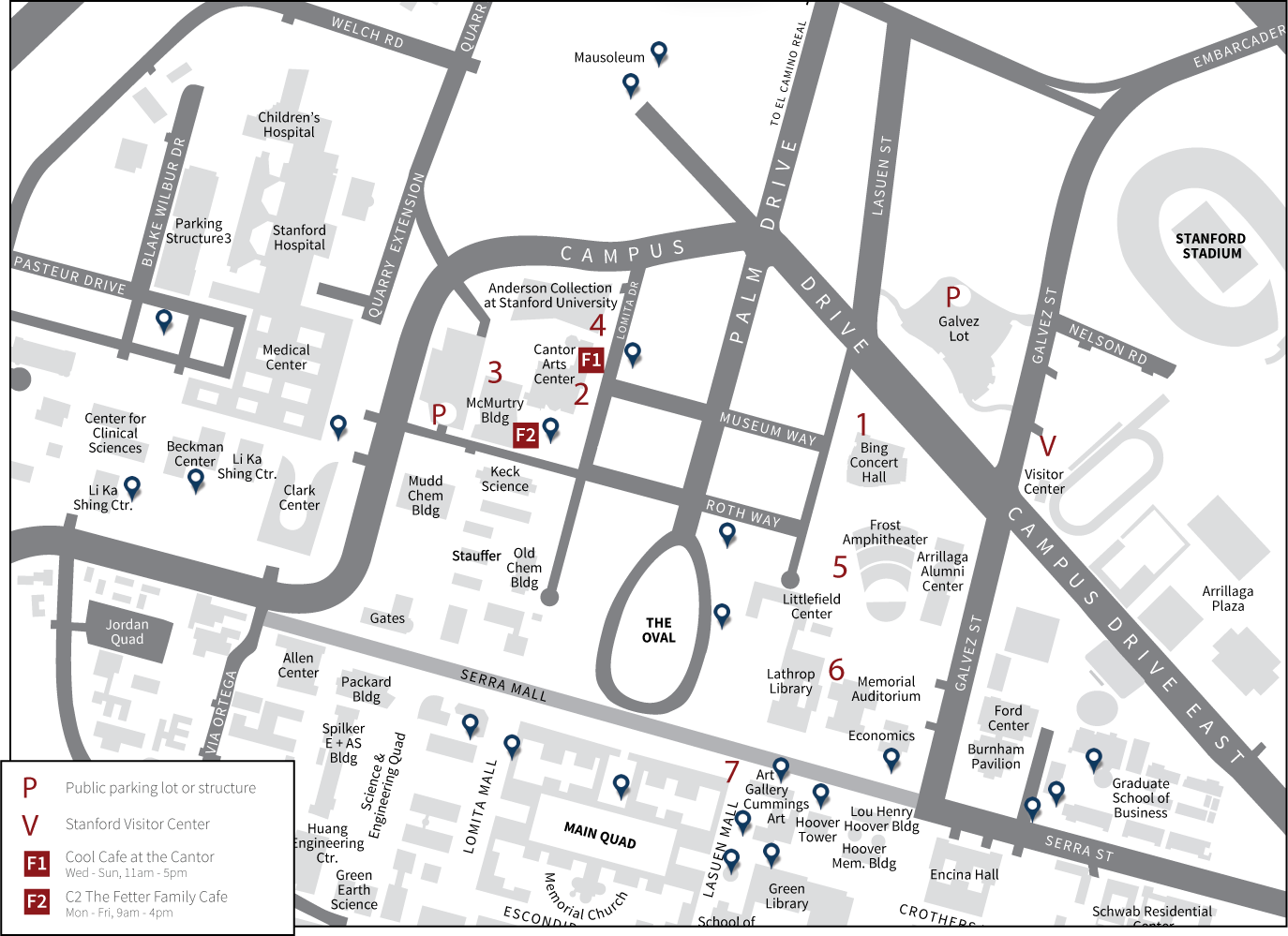Explore the Arts District
McMurtry Building Inaugural Year
In this inaugural year of the McMurtry Building, the new home of the Department of Art & Art History, special student exhibitions, guest lectures, and art installations will be presented throughout the building, and arts district neighbors the Cantor Arts Center and Anderson Collection are hosting supporting exhibitions.
In addition to the Jim & Penny Coulter Art Gallery in the McMurtry Building, visitors are welcome in the ground floor atrium under the center oculus, on the third floor roof garden, and in the cafe.
About the Arts District
Students, alumni, parents, faculty, staff, and the larger community are experiencing the arts on Stanford campus in new ways and in new facilities thanks in large part to the arts district that has developed around the Oval and Palm Drive.
The arts district is anchored by the historic Cantor Arts Center, Memorial Auditorium, Stanford Art Gallery and Frost Amphitheater. New facilities include Bing Concert Hall (2013), the Anderson Collection at Stanford University (2014) and the McMurtry Building for the Department of Art & Art History, which includes the Coulter Art Gallery (2015).
Visitors are welcome in the museums, galleries, performance spaces and buildings during open hours. The Rodin Sculpture Garden and outdoor art collection installed throughout the campus are open all hours.
Home to Stanford Live, the Bing is an 842-seat, state-of-the-art venue that hosts a wide range of music, dance and theater year-round. Discounted tickets are available for Stanford students, faculty and staff.
Check out the Stanford Live calendar and buy tickets at live.stanford.edu.
Art museum featuring works from Europe to Asia to Africa to America, from ancient to contemporary, and offering docent tours, family programs and lectures.
Free and open to the public, Wed - Mon 11am - 5pm, Thurs until 8pm. Closed Tues.
3. McMURTRY BUILDING FOR THE DEPARTMENT OF ART & ART HISTORY
A diverse academic environment dedicated to the study of art and its history.
The Coulter Art Gallery, ground floor courtyard, third floor roof garden, and cafe are open to the public. Classrooms and studios are closed to the public.
4. ANDERSON COLLECTION AT STANFORD UNIVERSITY
Art museum of modern and contemporary American works spanning Abstract Expressionism, Bay Area Figuration, Color Field Painting and more.
Free and open to the public, Wed - Mon 11am - 5pm, Thurs until 8pm. Closed Tues.
A tiered 20-acre outdoor performance space that hosts the Stanford Concert Network's annual music and arts festival in the spring and other events.
Check to see if there is an upcoming event at tickets.stanford.edu.
Stanford's largest indoor facility designed for regular performance use. It is home of the Department of Theater & Performance Studies (TAPS).
Check to see if there is an upcoming performance at taps.stanford.edu.
The Department of Art & Art History's teaching gallery featuring art by Stanford students, faculty and guest artists.
Free and open to the public, Tues - Sun, 11am - 6pm.
Closed for renovation until January 2016
Other Arts Facilities
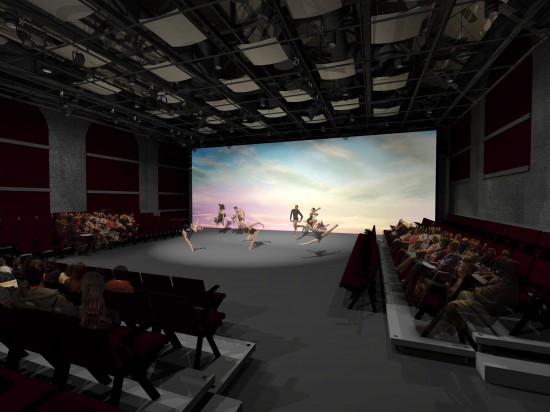
Roble Gym | Opening 2016
Roble Gym, a historic structure which opened as the women’s gym in 1931, is being renovated with a new flexible-configuration black-box style theater and improved dance and rehearsal studios for the Department of Theater & Performance Studies (TAPS). The renovation also includes the Stanford Arts Gym, a one-of-a-kind drop-in art-making studio and performing arts space. Boasting a flexible space for everything from informal performances to theatrical rehearsals to video production, the gym will be a hub for your arts practice with the swipe of your student I.D.
CCRMA Stage
CCRMA Stage at The Knoll is a 100-seat modular concert space equipped with 16 high-quality loudspeakers and a digital mixing console, two computers (Mac Mini and Linux), a DVD/CD player and an LCD projector for multi-media presentations. A Yamaha Disklavier (DC7 Pro) piano is also available along with a small performance lighting system. The room is acoustically treated, with acoustically sealed windows and doors, and adjustable acoustic window coverings. The Knoll was original built in 1918 to serve as the residence of the president of the university. In 1946 the building became the home of the Department of Music. In 1986 CCRMA took over residence and CCRMA Stage was created during a major renovation completed in 2005.

Dinkelspiel Auditorium
Located adjacent to the Braun Music Center and across from Tresidder Student Union, Dinkelspiel Auditorium is a large 710-seat performance and lecture hall. It serves the Department of Music and the rest of the university for large performances, lectures, symposia and rehearsals. Completed in 1957, Dinkelspiel Auditorium is named for Florence Hellman Dinkelspiel, wife of Lloyd W. Dinkelspiel, the former president of Stanford Board of Trustees.
White Plaza Stage
During the 2008 renovation of White Plaza, a large outdoor stage was created adjacent to Dinkelspiel Auditorium. The stage has been used for outdoor concerts, performances, and the annual student-run Arts + Sustainability Festival in the spring.
Memorial Church
Memorial Church stands at the center of the campus on the Quad, and is the university’s architectural crown jewel. It was one of the earliest, and is still among the most prominent, interdenominational churches in the West. Jane Stanford built the church as a memorial to her husband, Leland. It is home to many of the Department of Music’s ensembles including the Stanford Chamber Chorale, Stanford Symphonic Chorus and Stanford University Singers. Memorial Church is also a venue for many other groups and events throughout the year.
Kimball Hall Multimedia Studio
In May 2010 Kimball Hall became Stanford’s official Arts Theme House. The Stanford Arts Institute cosponsored the setup of a multimedia and recording studio space in the residence, which has been used to create podcasts, animations, productions, and musical recordings by Kimball arts-focus residents. With technology upgrades to the lounge space, Kimball also supports small-scale intimate concerts, workshops, and performances.
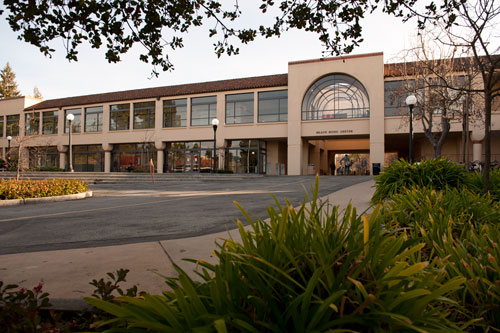
Braun Music Center
Braun Music Center, dedicated in 1984, is home to the Department of Music. The facility houses faculty offices, classrooms, and practice rooms, as well as the Archive of Recorded Sound, Braun Rehearsal Hall, and Campbell Recital Hall, an intimate 215-seat performance and lecture hall. Campbell is the department's primary venue for small ensemble and student recital performances.
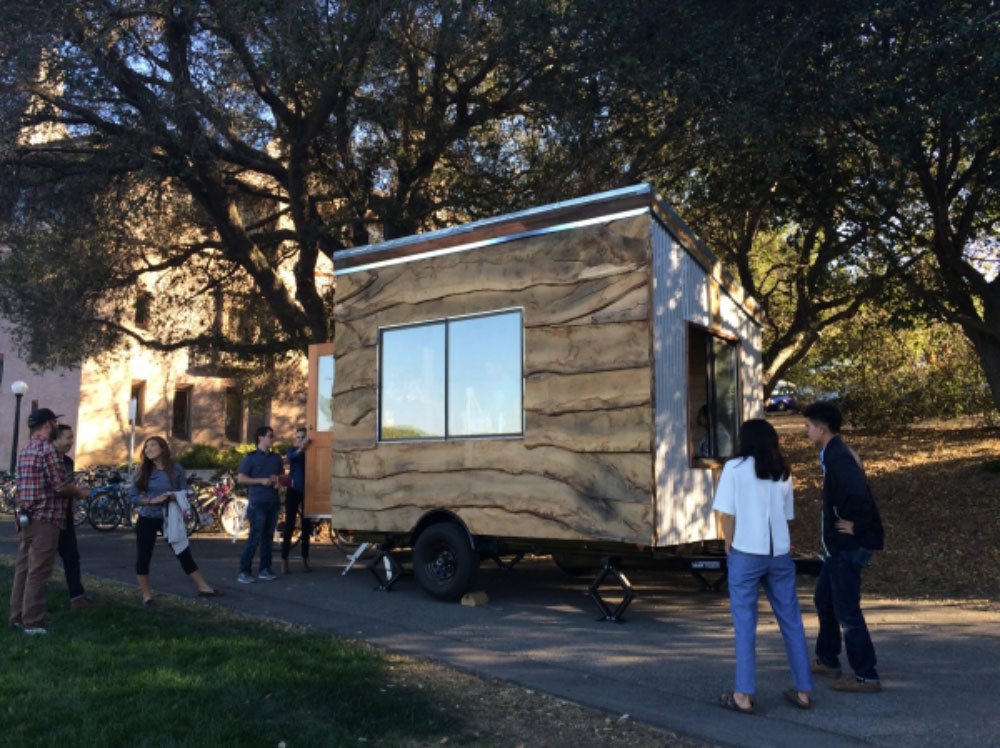
Studio 2
Stanford students make a place for making art at Jasper Ridge. Studio 2 is an eco, micro, mobile art space for the street or the foothills.
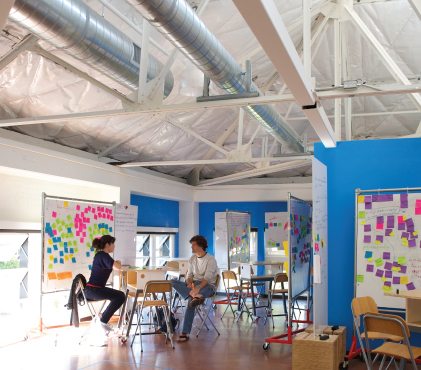
Hasso Plattner Institute of Design (d.School)
In May 2010, the Hasso Plattner Institute of Design, more commonly known as the d.School, opened the doors to its new home in Building 550. The building serves as a permanent home for the d.School students and faculty.
Nitery Theater
The Nitery black-box theater was recently upgraded as part of the renovation of Old Union, completed in 2007. The space has flexible seating capacity of up to 85 and can adapt to a wide range of seating and staging formats. This fully-equipped space is primarily used for directing workshops and student theater productions.

Stanford Ceramics Studio
Stanford’s new Ceramics Studio opened its doors in October 2008 to an enthusiastic student body. Created with the financial support of the Steven Denning and Roberta Bowman Denning Fund, the studio is a completely student-run facility and offers quarterly memberships, classes, and workshops for Stanford students.
For a comprehensive online map of outdoor art, venues, departments and more, visit arts.stanford.edu/map.
